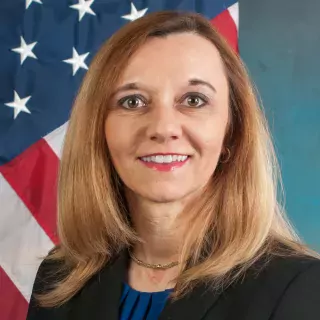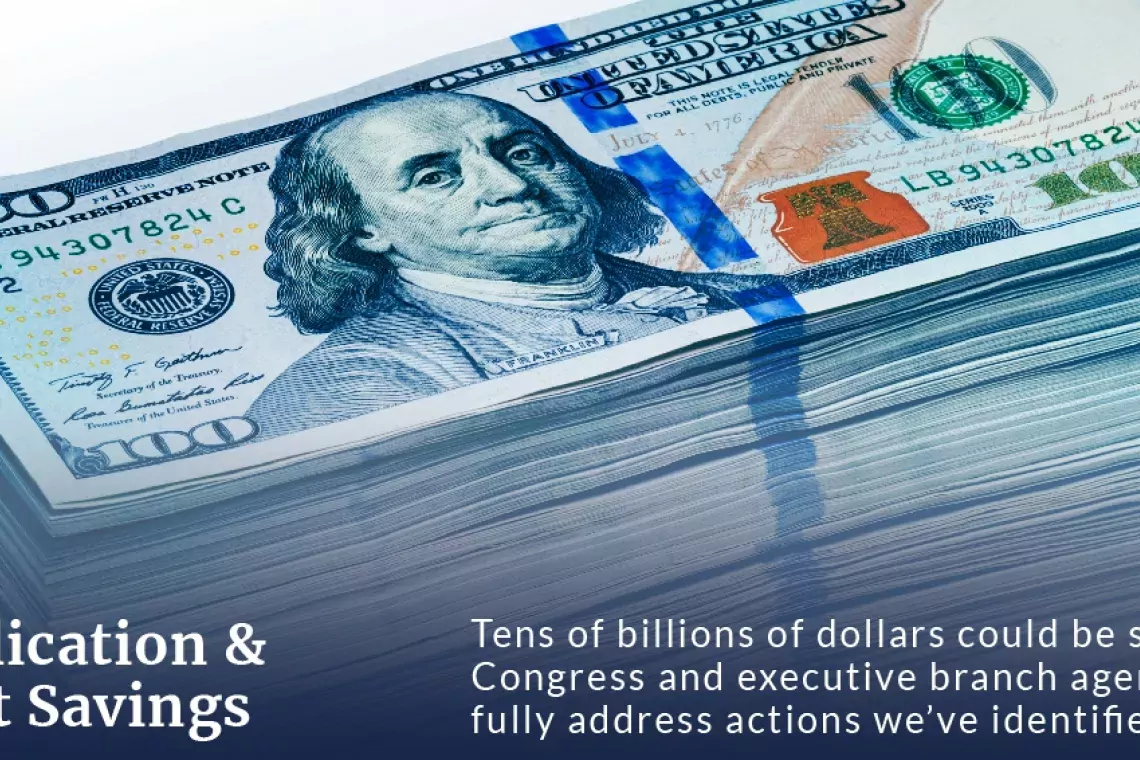We Found Billions More in Potential Savings Across the Federal Government By Reducing Duplication and Costs
Each year, we highlight federal programs with fragmented, overlapping, or duplicative goals and actions. Addressing these problems can dramatically reduce costs to taxpayers and improve government efficiency.
Since 2011, our duplication and cost savings work has found approximately $725 billion in financial benefits.
Today, we released our latest report on these issues. In it, we highlight 148 new actions for Congress and federal agencies that would improve government effectiveness and efficiency. If actions are taken on these issues, billions more could be saved.
Today’s WatchBlog post summarizes this work.
Total Financial Benefits: $725 Billion Identified from 2011 to 2025
Image

Where is action needed to improve government efficiency and effectiveness?
The 148 actions we identified in our new report fall into 43 new topic areas across the federal government. These include:
- The Office of Management and Budget (OMB) and 24 federal agencies could save one hundred million dollars or more by reducing duplicative IT investments and halting or terminating investments, when appropriate.
- The Space Development Agency should fully demonstrate its space-based laser communications technology in each development phase before progressing, potentially saving hundreds of millions of dollars over 10 years.
- The Department of Defense should take steps to incorporate data analytics into its fraud risk management strategy. It should also improve the usability of fraud investigative information to support its fraud-risk management. This could potentially save one hundred million dollars or more.
- OMB and the General Services Administration should join Congress in taking steps to help ensure the Federal Audit Clearinghouse contains quality single audit information. This could reduce risk and resolve deficiencies in federal award spending to save hundreds of millions of dollars per year.
- The U.S. Courts should better manage fragmentation by collaborating with relevant stakeholders when updating design standards for constructing federal courthouses. The Courts should also reassess changes made to those standards. This could avoid cost increases, potentially saving tens of millions of dollars.
- Congress should clarify the Department of Energy’s waste management authority at the Hanford site. Energy should also pause its clean-up efforts at a Hanford waste treatment facility—as it previously did with other types of waste—until it takes several actions. This could potentially save billions of dollars.
- The Department of the Interior could prevent continued productivity losses and cost overruns from a failed data system development and improve its compliance activities to verify federal oil and gas royalties. By doing so, it could potentially increase revenue collections by tens of millions of dollars per year.
What more needs to be done to save one hundred billion dollars or more?
Today’s report is our 15th annual look at ways the government can be more efficient and save taxpayers’ money by looking for agencies and programs that:
- Work on similar or different parts of the same goal (fragmentation)
- Have similar goals or provide similar services (overlap)
- Work on the same activities or provide the same services (duplication)
As of March, Congress and federal agencies have fully addressed 1,460 (71%) of the 2,049 recommendations we’ve made since 2011. They have also taken some action on another 130 (about 6%) of the remaining recommendations. These actions have resulted in financial and other benefits—including improving agencies’ coordination efforts, as well as reducing fraud, waste, abuse, and mismanagement.
Status of Duplication and Cost Saving Recommendations, as of March 2025
Image

But even more could be done to save taxpayers billions! Specifically, if Congress
- Took action on our recommendations related to Medicare payments—they could save $156.9 billion over 10 years.
- Considered reauthorizing FirstNet (a public-safety broadband network), they could save $15 billion over 15 years.
- Considered revisiting the use of Individual Retirement Accounts (IRAs) to accumulate large balances. Hundreds of taxpayers have accumulated tens of millions or more. Some people have used IRAs to escape taxes on investment gains. By revisiting this issue, Congress could potentially collect $10 billion or more in foregone tax revenues.
- Passed legislation requiring the Social Security Administration to offset Disability Insurance benefits for any Unemployment Insurance benefits received during the same period of time, they could save $2.2 billion over 10 years.
Fully addressing new actions and those that remain open from our prior reports could lead to one hundred billion dollars or more in additional financial benefits. You can learn more about these actions by checking out our Duplication & Cost Savings webpage.
- GAO’s fact-based, nonpartisan information helps Congress and federal agencies improve government. The WatchBlog lets us contextualize GAO’s work a little more for the public. Check out more of our posts at GAO.gov/blog.
- Got a comment, question? Email us at blog@gao.gov.
GAO Contacts
Related Products

GAO's mission is to provide Congress with fact-based, nonpartisan information that can help improve federal government performance and ensure accountability for the benefit of the American people. GAO launched its WatchBlog in January, 2014, as part of its continuing effort to reach its audiences—Congress and the American people—where they are currently looking for information.
The blog format allows GAO to provide a little more context about its work than it can offer on its other social media platforms. Posts will tie GAO work to current events and the news; show how GAO’s work is affecting agencies or legislation; highlight reports, testimonies, and issue areas where GAO does work; and provide information about GAO itself, among other things.
Please send any feedback on GAO's WatchBlog to blog@gao.gov.





